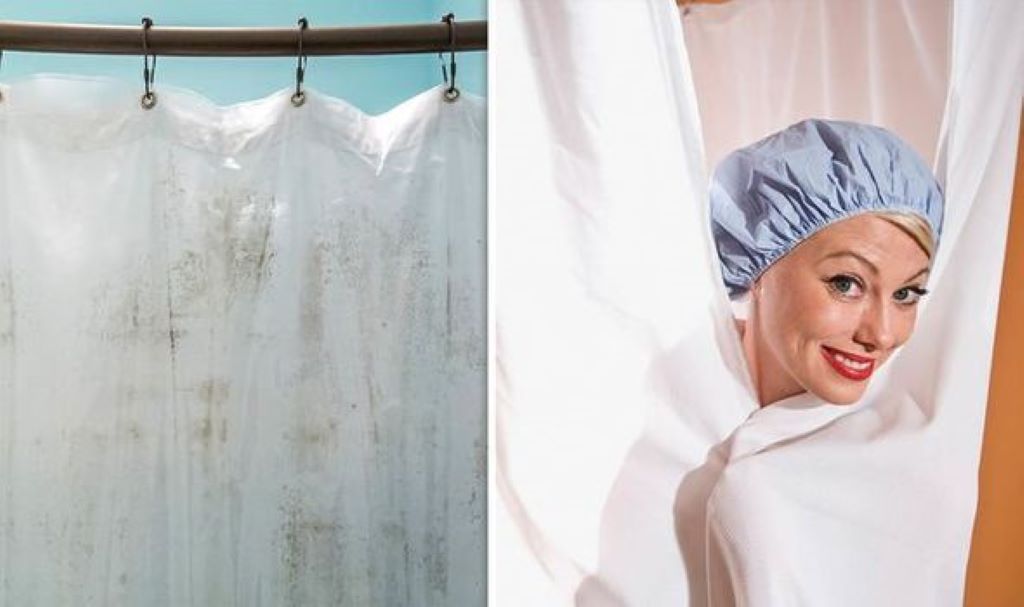How to Clean Shower Curtain: A Simple Guide for a Sparkling Bathroom

Keeping your bathroom clean is essential for maintaining a hygienic and pleasant living environment. Among the various components in the bathroom, the shower curtain often accumulates soap scum, mold, and mildew, making it look unsightly and potentially unhealthy. Cleaning your shower curtain is a simple task that, when done regularly, can keep your bathroom looking fresh and inviting. In this article, we will walk you through how to clean shower curtain effectively, using easy-to-find household items.
Why Clean Your Shower Curtain Regularly?
Before diving into the cleaning process, it’s essential to understand why regular shower curtain cleaning is crucial. Over time, soap scum, hard water stains, and mold can accumulate on the curtain’s surface. If left unattended, these buildups can not only make the curtain look dingy but also create an environment where bacteria and mildew can thrive. Regular cleaning helps maintain the appearance of your bathroom accessories, including your shower curtains. It extends their lifespan and promotes a healthier bathroom environment. However, if you’re noticing yellow spots on bathroom ceiling, it may be time to take extra measures to ensure that your bathroom is properly ventilated and that excess moisture is removed after showering.
Step-by-Step Guide to Cleaning Your Shower Curtain
Step 1: Remove the Shower Curtain
Begin by taking the shower curtain off the rod. For fabric curtains, carefully unhook the rings or clips, and for plastic or vinyl curtains, slide them off the hooks. Lay the curtain flat on the bathroom floor to facilitate the cleaning process.
Step 2: Check the Care Label
Before proceeding with any cleaning method, check the care label on your shower curtain. Some fabric curtains may require specific cleaning instructions or delicate handling. Follow the manufacturer’s guidelines for best results.
Step 3: Pre-Treat Stains
For stubborn stains, it’s a good idea to pre-treat them before washing. Apply a mixture of equal parts white vinegar and water directly to the stained areas. Let it sit for a few minutes to loosen the stains.
Step 4: Machine Wash
Most fabric shower curtains are machine washable. Place the curtain in the washing machine, along with a couple of bath towels to prevent the curtain from crinkling. Use a gentle cycle with warm water and add a mild detergent. Avoid using bleach, as it can damage the curtain.
Step 5: Hand Wash Plastic or Vinyl Curtains
Plastic and vinyl curtains are not suitable for machine washing. Instead, fill your bathtub with warm water and add a few drops of mild detergent. Gently scrub the curtain with a soft brush or cloth, paying attention to the areas with soap scum and mildew.
Step 6: Rinse Thoroughly
After machine or hand washing, thoroughly rinse the curtain to remove any soap residue.
Step 7: Drying the Curtain
For fabric curtains, hang them back on the rod to dry. Ensure they are spread out evenly to prevent excessive wrinkles. Plastic and vinyl curtains can be dried by hanging them over the shower rod or on a clothesline outside.
Tips for Maintaining a Clean Shower Curtain
- Regular Cleaning: Make a habit of cleaning your shower curtain every two to four weeks to prevent mold and mildew buildup.
- Keep the Bathroom Ventilated: Proper ventilation can reduce the humidity in the bathroom, minimizing the chances of mold growth on the curtain.
- Use a Shower Liner: Consider using a shower liner in addition to the fabric curtain. Liners are easier to clean and can provide an extra barrier against water splashes.
- Wipe Down After Each Use: After showering, take a moment to wipe down the curtain with a squeegee or towel to remove excess water and soap scum.
- Replace When Necessary: If your shower curtain is beyond cleaning or shows signs of wear and tear, don’t hesitate to replace it with a new one.
Conclusion
A clean shower curtain can make a significant difference in the overall appearance and hygiene of your bathroom. By following the simple steps outlined in this article, you can keep your shower curtain looking fresh and extend its lifespan, all while ensuring the bathtub drain is correctly placed for optimal functionality. Regular cleaning, proper maintenance, and a few easy-to-follow tips will ensure that your shower curtain remains sparkling clean for a long time to come.
FAQs
Q1: Can I use bleach to clean my shower curtain?
A1: It’s generally not recommended to use bleach on shower curtains, especially fabric ones, as it can weaken the fabric and cause discoloration. Instead, opt for milder cleaning solutions like vinegar or baking soda.
Q2: How often should I replace my shower curtain?
A2: The frequency of replacement depends on the curtain’s material and usage. Fabric curtains may last longer with proper care and washing, while plastic or vinyl curtains may need replacement every six months to a year.
Q3: My plastic shower curtain has a stubborn odor. What can I do?
A3: To remove odors from plastic shower curtains, try soaking them in a mixture of warm water and baking soda for a few hours before washing.
Q4: Can I put my fabric shower curtain in the dryer?
A4: It’s best to avoid machine drying fabric shower curtains, as this can lead to wrinkles and damage. Instead, let them air dry to maintain their appearance.
Q5: Is it necessary to use a shower liner?
A5: While not mandatory, using a shower liner can help protect your fabric curtain and keep it cleaner for longer, as liners are easier to clean and maintain.








